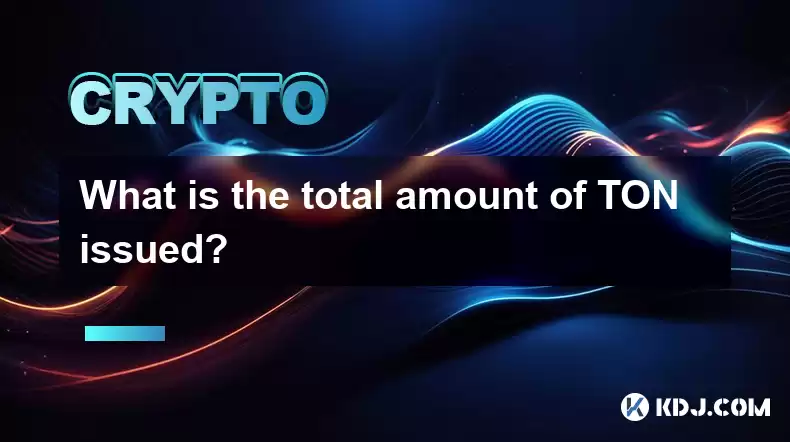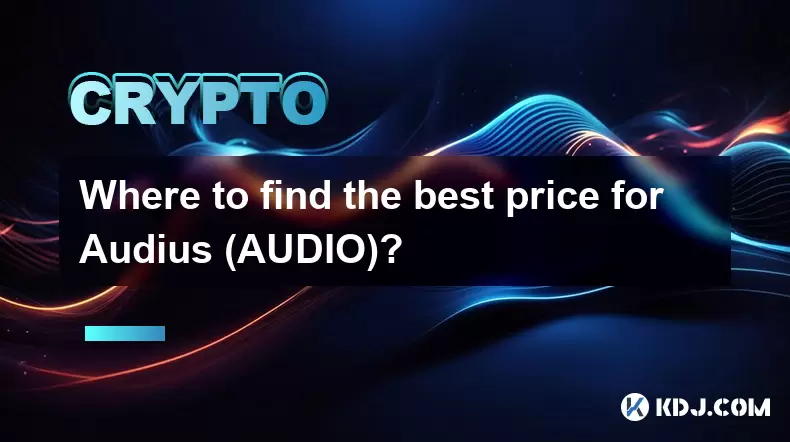-
 Bitcoin
Bitcoin $118900
-2.33% -
 Ethereum
Ethereum $4288
-0.13% -
 XRP
XRP $3.151
-3.21% -
 Tether USDt
Tether USDt $1.000
0.02% -
 BNB
BNB $809.5
-1.17% -
 Solana
Solana $175.7
-4.75% -
 USDC
USDC $0.0000
0.01% -
 Dogecoin
Dogecoin $0.2246
-5.75% -
 TRON
TRON $0.3473
2.19% -
 Cardano
Cardano $0.7809
-5.18% -
 Chainlink
Chainlink $21.38
-3.48% -
 Hyperliquid
Hyperliquid $43.29
-5.53% -
 Stellar
Stellar $0.4375
-3.21% -
 Sui
Sui $3.685
-6.68% -
 Bitcoin Cash
Bitcoin Cash $595.2
3.50% -
 Hedera
Hedera $0.2483
-6.60% -
 Ethena USDe
Ethena USDe $1.001
-0.01% -
 Avalanche
Avalanche $23.03
-5.28% -
 Litecoin
Litecoin $119.5
-5.02% -
 Toncoin
Toncoin $3.395
-0.07% -
 UNUS SED LEO
UNUS SED LEO $9.007
-1.19% -
 Shiba Inu
Shiba Inu $0.00001304
-5.44% -
 Uniswap
Uniswap $11.35
1.57% -
 Polkadot
Polkadot $3.898
-5.43% -
 Cronos
Cronos $0.1671
-0.16% -
 Ethena
Ethena $0.8121
-2.45% -
 Dai
Dai $1.000
0.02% -
 Bitget Token
Bitget Token $4.412
-1.73% -
 Monero
Monero $264.0
-0.64% -
 Pepe
Pepe $0.00001128
-8.12%
What is the total amount of TON issued?
TON's total cryptocurrency supply isn't fixed; its algorithmic issuance, tied to network activity, makes the total amount constantly evolving, unlike cryptocurrencies with predetermined maximums.
Mar 11, 2025 at 02:05 am

Key Points:
- The total supply of TON cryptocurrency is not fixed and is algorithmically controlled.
- There's no single, readily available number representing the absolute "total amount" of TON issued.
- The circulating supply, representing tokens actively in use, differs from the total potential supply.
- TON's issuance mechanism is designed for long-term sustainability and network growth.
- Understanding TON's issuance requires grasping its unique consensus mechanism and economic model.
What is the total amount of TON issued?
The question of TON's total supply is complex and doesn't have a straightforward answer like many other cryptocurrencies with a predetermined maximum supply. Unlike Bitcoin with its capped 21 million coins, TON's total supply isn't a fixed number. Its issuance is governed by a dynamic, algorithmic mechanism deeply intertwined with its consensus and economic model. This means the total number of TON tokens in circulation is constantly evolving.
The absence of a fixed total supply is a deliberate design choice. It aims to provide flexibility for the network's long-term growth and adaptation to changing market conditions. A fixed supply could create artificial scarcity, potentially impacting price volatility and hindering the network's adoption.
Instead of a maximum cap, TON’s issuance is tied to various factors influencing the network's health and activity. These factors might include the number of active validators, transaction volume, and overall network participation. The precise formula governing TON's issuance isn't publicly disclosed in complete detail, making precise predictions about its future total supply impossible.
This approach allows the network to adjust its token supply organically. A growing and thriving network might see a higher issuance rate, while a less active network could experience a slower rate or even a temporary decrease. This mechanism aims to maintain a balance between incentivizing network participation and preventing inflation from spiraling out of control.
The circulating supply of TON, which represents the number of tokens currently in circulation and actively used for transactions, is readily available on various cryptocurrency tracking websites. However, this figure is distinct from the potential total supply, which is a constantly shifting number dictated by the algorithmic issuance. Understanding this distinction is crucial when evaluating TON's value and its long-term potential.
The lack of a fixed total supply can be both an advantage and a disadvantage. It offers flexibility for the project's future development, but it also makes predicting its long-term economic behavior more challenging. Investors and analysts need to carefully consider this dynamic aspect of TON when assessing its investment risks and rewards. The lack of complete transparency around the issuance algorithm further adds to the complexity.
To understand TON's issuance mechanics fully, one needs a deep understanding of its underlying consensus mechanism and its economic model. The project's whitepaper and other official documentation provide some insights, but the specifics of the algorithmic issuance remain partially undisclosed, potentially to avoid manipulation or unintended consequences.
The constantly evolving nature of TON's total supply presents a unique challenge for market analysis. Traditional valuation methods based on fixed supply models are not directly applicable to TON. This necessitates alternative approaches that account for the dynamic nature of its tokenomics.
Moreover, TON's governance model plays a significant role in shaping its issuance. Any future changes to the governance structure could also influence the algorithm governing token issuance. This further emphasizes the importance of monitoring the project's governance developments to gain a clearer understanding of its future supply dynamics.
The focus should shift from a singular, fixed "total amount" to understanding the underlying mechanisms driving TON's token issuance. Analyzing the network's activity, growth trends, and the project's roadmap can provide better insights into the likely future trajectory of its token supply.
The decentralized nature of TON also contributes to the complexity of determining its total supply. The distribution of tokens across various wallets and exchanges makes tracking the exact total challenging. Data aggregators can only provide estimates based on the available information, which might not represent the complete picture.
In conclusion, there is no single, definitive answer to the question of TON's total supply. The dynamic and algorithmic nature of its issuance makes it a constantly changing figure. Instead of seeking a fixed number, focusing on understanding the mechanisms driving its issuance is a more effective approach to comprehending TON's economic model.
Frequently Asked Questions:
Q: Where can I find the current circulating supply of TON? A: Several cryptocurrency tracking websites, like CoinMarketCap and CoinGecko, provide real-time data on TON's circulating supply. However, remember this is different from the potentially much larger total supply.
Q: Is TON inflationary or deflationary? A: TON's inflationary or deflationary nature is not easily defined. Its algorithmic issuance aims for a balance, adjusting to network activity, making it neither purely inflationary nor deflationary in a traditional sense.
Q: What are the risks associated with TON's dynamic supply? A: The lack of a fixed supply introduces uncertainty regarding future price movements. Rapid increases in supply could lead to inflation, while overly restrictive issuance could stifle network growth.
Q: How does TON's issuance mechanism compare to other cryptocurrencies? A: Unlike Bitcoin's fixed supply or Ethereum's relatively predictable issuance schedule, TON's algorithmic approach is unique and significantly more complex, offering both flexibility and uncertainty.
Q: Will the total supply of TON ever be capped? A: Currently, there's no indication of a future cap on TON's supply. The project's design suggests that the dynamic issuance mechanism is intended to remain a core feature.
Disclaimer:info@kdj.com
The information provided is not trading advice. kdj.com does not assume any responsibility for any investments made based on the information provided in this article. Cryptocurrencies are highly volatile and it is highly recommended that you invest with caution after thorough research!
If you believe that the content used on this website infringes your copyright, please contact us immediately (info@kdj.com) and we will delete it promptly.
- Dogecoin, Presale, Surge: Riding the Meme Coin Wave
- 2025-08-12 11:10:12
- Dogecoin, Tron, and the ROI Reality Check: What's a Crypto Investor to Do?
- 2025-08-12 11:15:12
- Ethereum Layer-2 Scaling Competition Heats Up as ETH Breaks $4K
- 2025-08-12 10:30:12
- China Regulation, Stablecoins, and BNB Presale: Navigating the Crypto Landscape
- 2025-08-12 11:30:12
- Meme Coins, Investment, and Token Burns: What's Hot in 2025?
- 2025-08-12 10:30:12
- BlockDAG, Chainlink, Hedera: The Cryptos Enterprises are Eyeing
- 2025-08-12 09:30:12
Related knowledge

How to purchase Aragon (ANT)?
Aug 09,2025 at 11:56pm
Understanding Aragon (ANT) and Its PurposeAragon (ANT) is a decentralized governance token that powers the Aragon Network, a platform built on the Eth...

Where to trade Band Protocol (BAND)?
Aug 10,2025 at 11:36pm
Understanding the Role of Private Keys in Cryptocurrency WalletsIn the world of cryptocurrency, a private key is one of the most critical components o...

What is the most secure way to buy Ocean Protocol (OCEAN)?
Aug 10,2025 at 01:01pm
Understanding Ocean Protocol (OCEAN) and Its EcosystemOcean Protocol (OCEAN) is a decentralized data exchange platform built on blockchain technology,...

Where can I buy UMA (UMA)?
Aug 07,2025 at 06:42pm
Understanding UMA and Its Role in Decentralized FinanceUMA (Universal Market Access) is an Ethereum-based decentralized finance (DeFi) protocol design...

How to buy Storj (STORJ) tokens?
Aug 09,2025 at 07:28am
Understanding Storj (STORJ) and Its Role in Decentralized StorageStorj is a decentralized cloud storage platform that leverages blockchain technology ...

Where to find the best price for Audius (AUDIO)?
Aug 11,2025 at 04:01pm
Understanding the Basics of Ethereum StakingEthereum staking refers to the process of locking up ETH tokens to support the security and operations of ...

How to purchase Aragon (ANT)?
Aug 09,2025 at 11:56pm
Understanding Aragon (ANT) and Its PurposeAragon (ANT) is a decentralized governance token that powers the Aragon Network, a platform built on the Eth...

Where to trade Band Protocol (BAND)?
Aug 10,2025 at 11:36pm
Understanding the Role of Private Keys in Cryptocurrency WalletsIn the world of cryptocurrency, a private key is one of the most critical components o...

What is the most secure way to buy Ocean Protocol (OCEAN)?
Aug 10,2025 at 01:01pm
Understanding Ocean Protocol (OCEAN) and Its EcosystemOcean Protocol (OCEAN) is a decentralized data exchange platform built on blockchain technology,...

Where can I buy UMA (UMA)?
Aug 07,2025 at 06:42pm
Understanding UMA and Its Role in Decentralized FinanceUMA (Universal Market Access) is an Ethereum-based decentralized finance (DeFi) protocol design...

How to buy Storj (STORJ) tokens?
Aug 09,2025 at 07:28am
Understanding Storj (STORJ) and Its Role in Decentralized StorageStorj is a decentralized cloud storage platform that leverages blockchain technology ...

Where to find the best price for Audius (AUDIO)?
Aug 11,2025 at 04:01pm
Understanding the Basics of Ethereum StakingEthereum staking refers to the process of locking up ETH tokens to support the security and operations of ...
See all articles

























































































